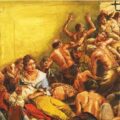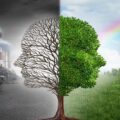1. Study of tissues is called:
(A) Anatomy (B) Cytology (C) Morphology (D) Histology
2. Term “Histology” to separate branch for study of tissues as given by:
(A) None of these (B) Mayer (1819)
(C) Marcello Malpighi (1628 – 1694) (D) Bichat (1771 – 1802)
3. Term “Epithelia” was introduced by:
(A) Bichat (B) Mayer
(C) Marcello Malpighi (D) Ruysch
4. Who coined the term protoplasm?
(A) Purkinja (B) Dujardin (C) None of these (D) Von Mohl
5. Exchange of materials between blood and tisue cells occurs through:
(A) Tissue fluid (B) Plasma (C) Lymph (D) Water
6. Mast cells are present in:
(A) Muscular tissue (B) Areolar tissue
(C) Epithelial tissue (D) Nervous tissue
7. Stratified epithelium is found in:
(A) Liver (B) Trachea (C) Stomach (D) Skin
8. Epithelium by origin is:
(A) All of these (B) Endodermal (C) Ectodermal (D) Mesodermal
9. Cuboidal epithelium is found in:
(A) Sweat gland (B) Gonads
(C) Uriniferous tubules (D) All of these
10. Transitional epithelium is:
(A) Adapted for none of these functions
(B) Adapted for distension of the organ where it is present
(C) Adapted for ultrafiltration
(D) Adapted for providing strength
11. Lumen of stomach and intestine has:
(A) Squamous epithelium (B) Columnar epithelium
(C) Specialized epithelium (D) Cuboidal epithelium
12. Mixed glands which release both serous and mucous secretions are represented in our body by:
(A) None of these (B) Submandibular salivary glands
(C) Both of these (D) Most gastric glands
13. Which of the following glands are apocrine in nature:
(A) Intestinal glands (B) Mammary glands
(C) Goblet cells (D) Sebaceous glands
14. Secretory units are rounded in:
(A) Tubular glands (B) Acinus glands
(C) Alveolar glands (D) None of these
15. Connective tissue in our body constitutes:
(A) 50% of body mass (B) 30% of body mass
(C) 60% of body mass (D) 80% of body mass
16. Aging in our body is associated with deterioration in our:
(A) None of these (B) Connective tissue
(C) Epithelia (D) Bones
17. Muscular tissues are more active than others, which organelles are expected to be more numerous in the cells of this tissue:
(A) Centriole
(B) Mitochondria
(C) Nuclei (D) Nucleoli
18. Mast cells areolar tissue secrete|:
(A) Serotonin (B) All of these (C) Haparin (D) Histamine
19. One of the following substances acts as a vasoconstrictor to arrest bleeding and also to increase blood pressure is:
(A) Serotonin (B) None of these
(C) Histamine (D) Heparin
20. Which of the following cells of areolar tissue form antibodies:
(A) Mast cells (B) Fibrocytes
(C) Plasma cells (D) Macrophages
21. White fibres are made up of:
(A) None of these (B) Elastin (C) Reticulin (D) Collagen
22. Excessive stretching of ligaments results in:
(A) None of these (B) Sprue (C) Fracture (D) Sprain
23. Wharton’s jelly is made up of:
(A) Reticular connective tissue (B) Mucous connective tissue
(C) Adipose connective tissue (D) None of these
24. Cells of squamous epithelium are:
(A) Flat and tile-like (B) Tall with elongated nuclei
(C) Cube-like (D) Columnar or cuboidal
25. Chondrin is found in the matrix of:
(A) Nerve fibre (B) Bone (C) Cartilage (D) Muscle
26. Ligaments join:
(A) Bones to muscles (B) Bones to bones
(C) Muscles to cartilages (D) Muscles to muscles
27. Ear pinnae, epiglottis and bronchiolar cartilages are:
(A) Fibro (B) Hyaline (C) None of these (D) Yellow elastic
28. Mammalian bones differ with those of frog in having:
(A) Haversian canals (B) Ependymal cells
(C) Chondroytes (D) None of these
29. Haversian canals during life may contain:
(A) A vein, an artery, a nerve and some bone cells
(B) Only an artery, vein and nerve
(C) Only an artery and a vein
(D) Only a lymphatic vessel and some bone cells
30. Which of the following minerals is maximum in the bone:
(A) Calcium sulphate (B) Calcium chloride
(C) Calcium carbonate
(D) Calcium phosphateSrinivas Arla M.Sc,B.Ed
ZOOLOGY Lecturer 9492195725
Answers
1.D 2.B 3.D 4.C 5.D 6.B 7.D 8.D 9. D 10.B 11.B 12.C 13.B 14.B 15.B 16.B 17.B 18.B 19.A 20.C 21.D 22.D 23.B 24.A 25.C 26.B 27.A 28.A 29.C 30.D




